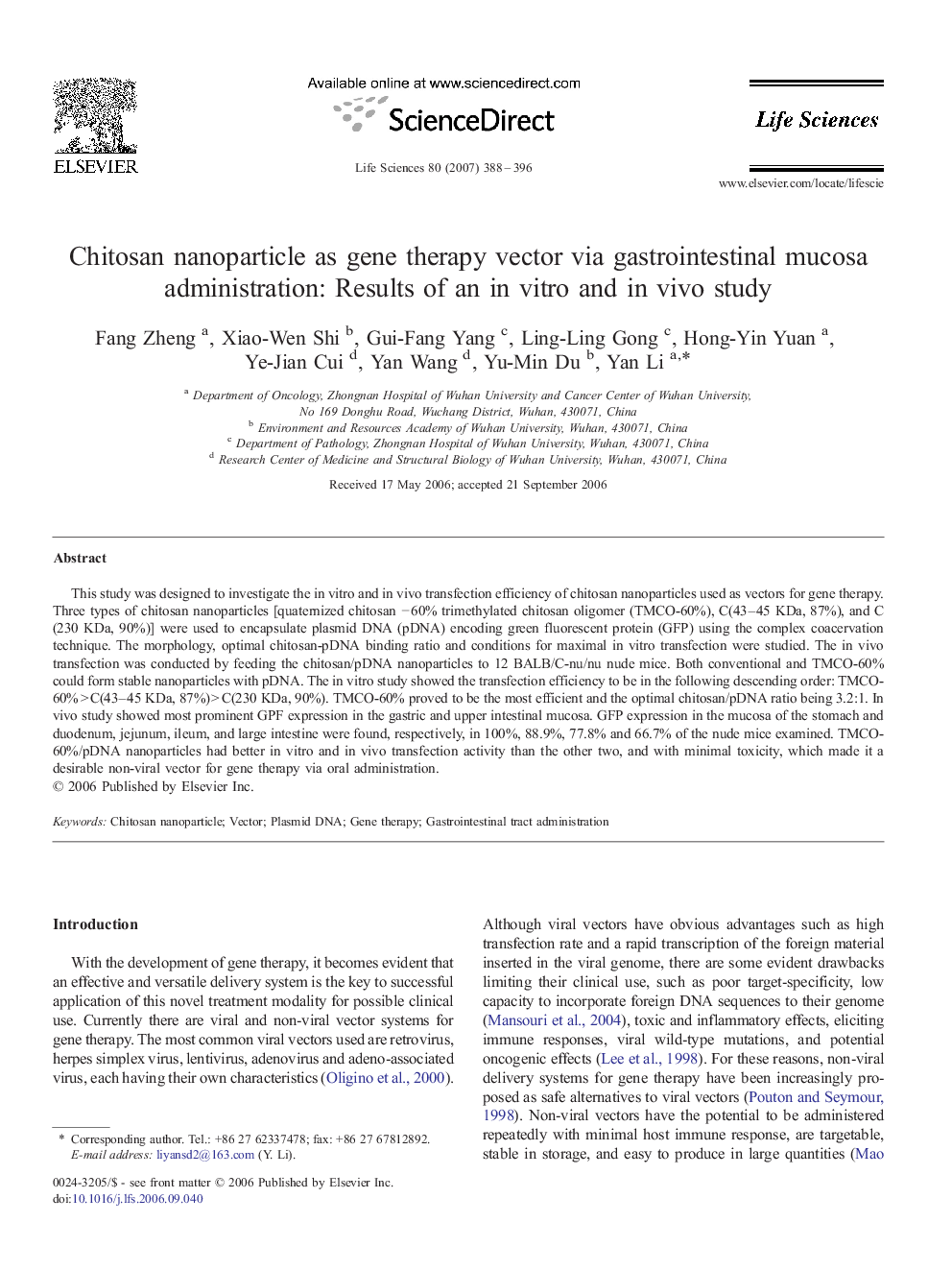| Article ID | Journal | Published Year | Pages | File Type |
|---|---|---|---|---|
| 2553714 | Life Sciences | 2007 | 9 Pages |
This study was designed to investigate the in vitro and in vivo transfection efficiency of chitosan nanoparticles used as vectors for gene therapy. Three types of chitosan nanoparticles [quaternized chitosan − 60% trimethylated chitosan oligomer (TMCO-60%), C(43–45 KDa, 87%), and C(230 KDa, 90%)] were used to encapsulate plasmid DNA (pDNA) encoding green fluorescent protein (GFP) using the complex coacervation technique. The morphology, optimal chitosan-pDNA binding ratio and conditions for maximal in vitro transfection were studied. The in vivo transfection was conducted by feeding the chitosan/pDNA nanoparticles to 12 BALB/C-nu/nu nude mice. Both conventional and TMCO-60% could form stable nanoparticles with pDNA. The in vitro study showed the transfection efficiency to be in the following descending order: TMCO-60% > C(43–45 KDa, 87%) > C(230 KDa, 90%). TMCO-60% proved to be the most efficient and the optimal chitosan/pDNA ratio being 3.2:1. In vivo study showed most prominent GPF expression in the gastric and upper intestinal mucosa. GFP expression in the mucosa of the stomach and duodenum, jejunum, ileum, and large intestine were found, respectively, in 100%, 88.9%, 77.8% and 66.7% of the nude mice examined. TMCO-60%/pDNA nanoparticles had better in vitro and in vivo transfection activity than the other two, and with minimal toxicity, which made it a desirable non-viral vector for gene therapy via oral administration.
